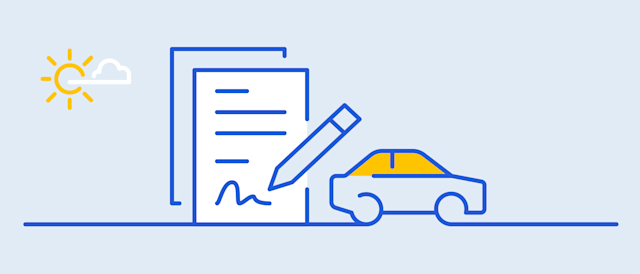What is Loan Underwriting, and How Does it Work?
Summary
Loan underwriting is the process a lender uses to determine the level of risk involved in approving a loan application. Find out how the personal loan underwriting process works and why it matters for your finances.
In this article:
When you apply for a loan, your application goes through a process called underwriting. Lenders use underwriting to help determine whether to approve your application and what terms can be offered to you.
Below, we’ll dive deeper into what underwriting is, how long it takes and what you can expect before and after the process.
What is loan underwriting?
Loan underwriting is the process a lender uses to determine the level of risk involved in approving your application. Underwriting may weigh factors like your credit score, income and employment history to help lenders make financial decisions during the process. The underwriting process also helps lenders set interest rates and terms that offset the risk of extending the loans they make.1
What happens during the loan underwriting process?
The personal loan underwriting process is typically automated. It assesses the risk of lending to you by evaluating your financial situation, as well as determining the value of your collateral, if needed. Lenders use the information gained from underwriting to decide whether to approve or decline your application. The process usually includes reviewing the following:2
Credit history: When you apply for a loan, the lender will complete a hard credit check to review your creditworthiness. A higher credit score may give you a better chance of being approved, potentially with a more favorable interest rate and repayment terms. Note that a hard credit check may result in a small, temporary dip in your credit score.
Income: The lender may review pay stubs, bank account statements and tax forms to determine your income. Steady, reliable income may show a greater ability to repay the loan and increase your chances of approval.
Other debts: Your debt-to-income (DTI) ratio compares your monthly debt payments to your monthly income. The lender will use your DTI to determine if you will have enough income to repay the loan and measure the risk of offering it to you.
Collateral: Secured loans are backed by collateral, which is something valuable you possess, such as a car or motorcycle, to obtain the loan. The lender may take the collateral if you fail to repay the loan. The lender will determine the value of the collateral and, when needed, verify insurance coverage for it.
How long does loan underwriting take?
The timeline for underwriting varies and depends on several factors, such as how the lender handles underwriting, the loan type, the length of the verification process, and the complexity of the loan.
In general, the personal loan underwriting process may only take a few days, but in some cases, it could be even faster.
Secured loans may take slightly longer to review because the lender has to appraise your collateral. For example, the lender may need to compare your car to similar vehicles on the market, which can add time.3
What happens after underwriting?
Once the lender makes the final decision, you could see one of three outcomes:
- Approval: If you get approved, you can receive the loan you requested. You’ll have to sign an agreement to receive your funds. Be sure to check your documents before signing so you understand the terms and conditions of your loan.
- Conditional approval: A conditional approval means you may get approved if you provide additional information that confirms you meet certain criteria. For example, your lender might ask for an additional document that shows you have a steady income.
- Declined application: When a lender declines your application, you won’t be able to take out the loan you applied for. The lender is required by law to provide a letter, called an adverse action notice, explaining why your application was declined. If your loan was declined due to a low credit score or a lack of income, you could improve your chances of approval next time by taking steps to boost your creditworthiness. Checking your credit report and disputing any errors you might find or paying down your debt could help raise your odds of approval. You may also consider applying with a cosigner with a strong credit score or history who will agree to take on the debt if you can’t repay it.4
How to prepare for the underwriting process
Before you apply for a loan, be proactive and do your research. Gather the financial documents you need in advance to help streamline the process. You might also consider prequalifying for a loan, which allows you to see how much you might be able to borrow before you apply — without hurting your credit.
Sources:
1,2 https://www.investopedia.com/terms/u/underwriting.asp
3 https://www.investopedia.com/terms/collateral-value.asp
4 https://www.nerdwallet.com/article/loans/personal-loans/personal-loan-application-tips-win-approval
This article is for general education and informational purposes, without any express or implied warranty of any kind, including warranties of accuracy, completeness, or fitness for any purpose and is not intended to be and does not constitute financial, legal, tax, or any other advice. Parties (other than sponsored partners of OneMain Financial (OMF)) referenced in the article are not sponsors of, do not endorse, and are not otherwise affiliated with OMF.



